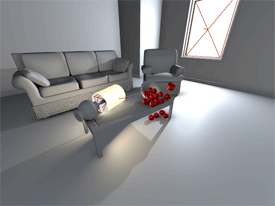 |
Viewport 2.0 now supports animation and rigging features such as HumanIK, joints, motion paths, ghosting and playblast. Image plane support is also included as well as a new depth peeling transparency algorithm. In addition, support for several other shaders and tools, and polygons, NURBS and dynamics features have been added. Furthermore, Viewport 2.0 now includes widespread improvements in tumble performance of large scenes and in animation performance with large or complicated scenes.
|
New substance textures and functionality
The new callbacks command allows you to extend the Maya UI with your own components. Use this command to add your own callbacks to standard Maya hooks without the need to overwrite Maya MEL files. Currently, Maya hooks are provided for the Hypershade, the Create Render Node dialog, and Attribute Editor templates.
See the callbacks command documentation for more information about this command.
You can now create a free image plane. A free image plane is an image plane that is not attached to the camera; one that you can select and transform in your scene. Select Create > Free Image Plane to create one.
mental ray rendering support for GPU cached Alembic files
mental ray supports the rendering of GPU cached Alembic files, including baked diffuse color information if the GPU cache was used to create the Alembic file.
Built in BSDF (bidirectional scattering distribution function) shaders from NVIDIA mental images are now exposed in Maya. You can find them by selecting Window > Rendering Editors > Hypershade > mental ray > Materials. For more information about these shaders, please see the mental ray shader documentation.